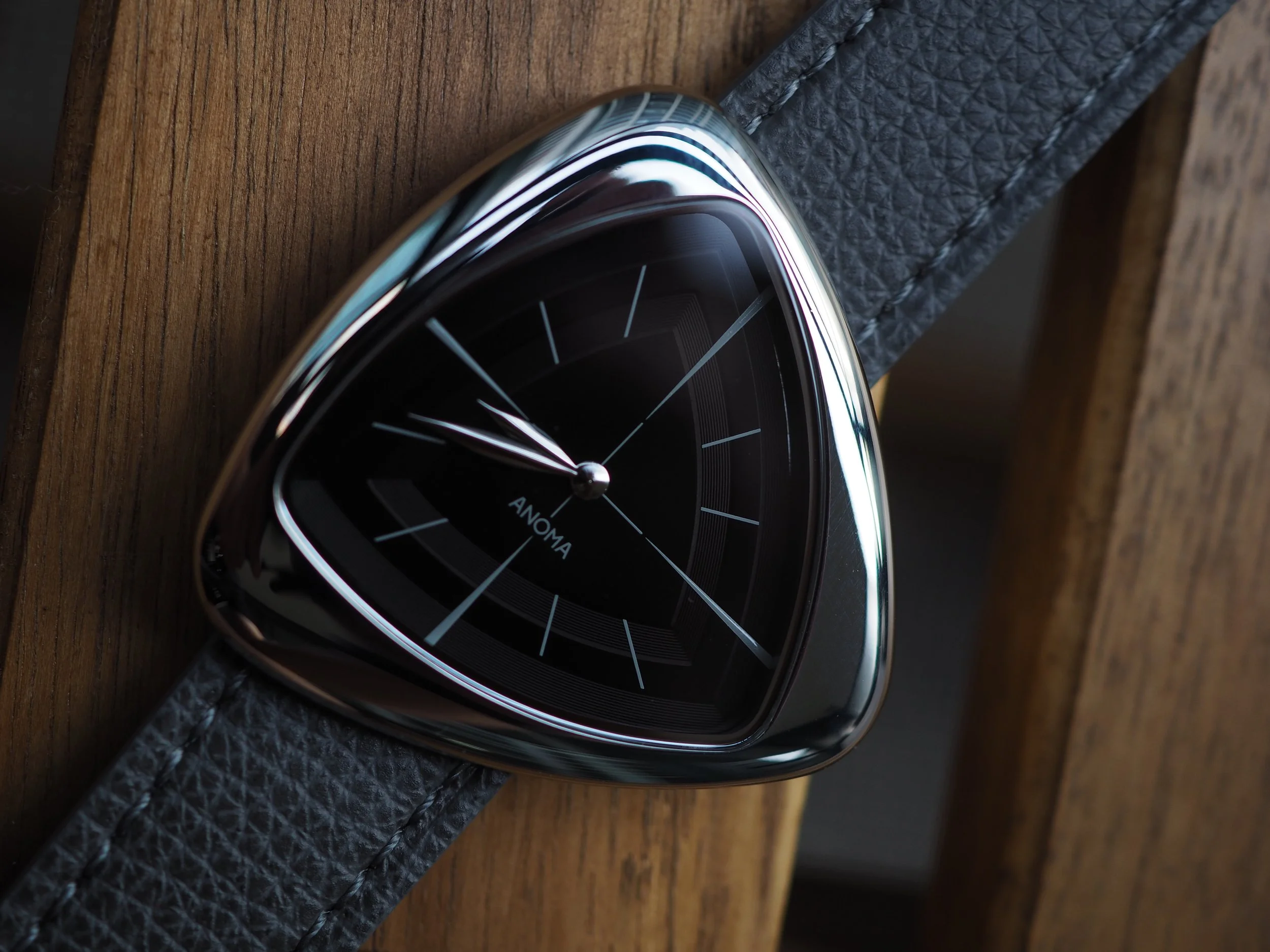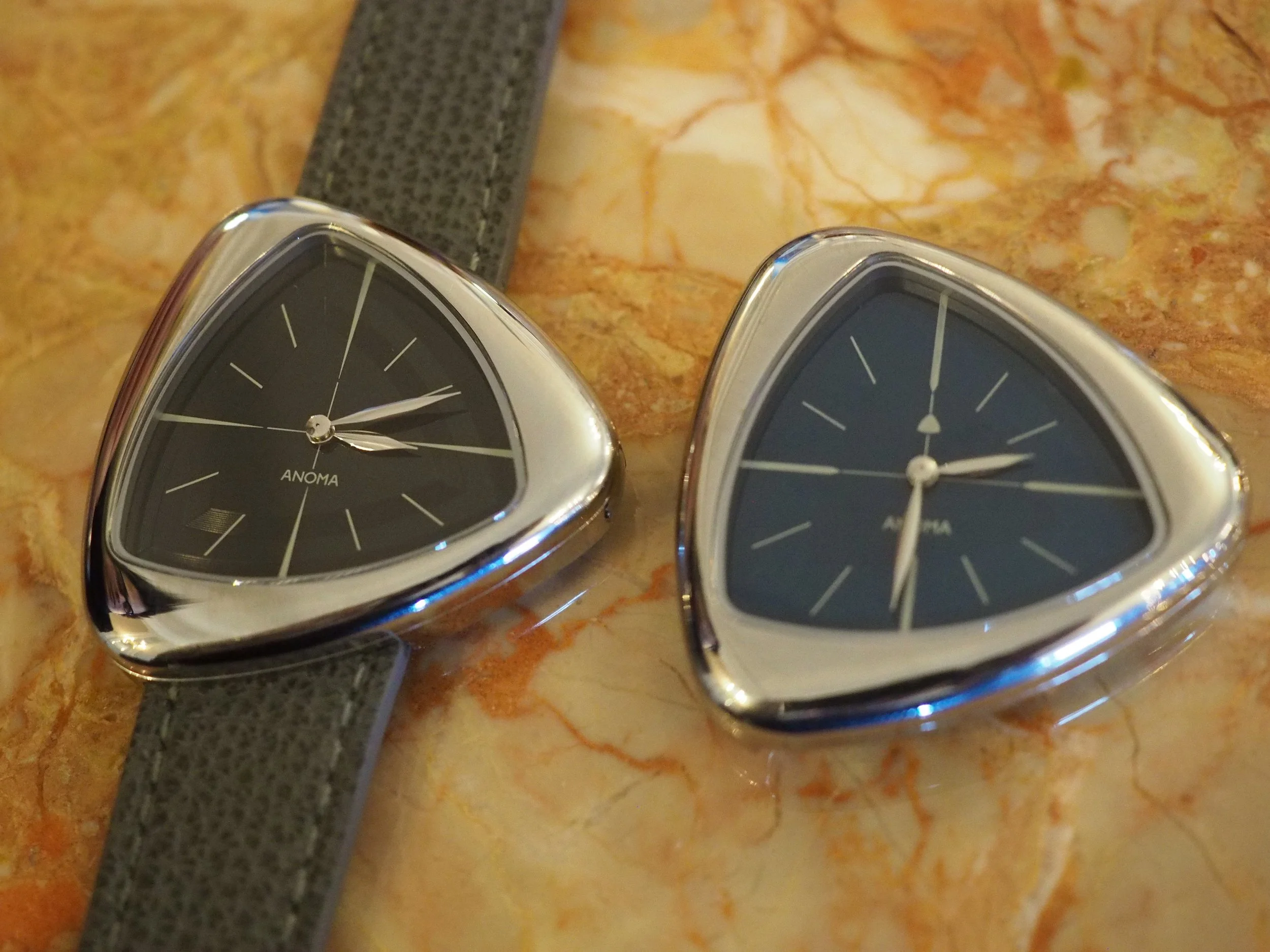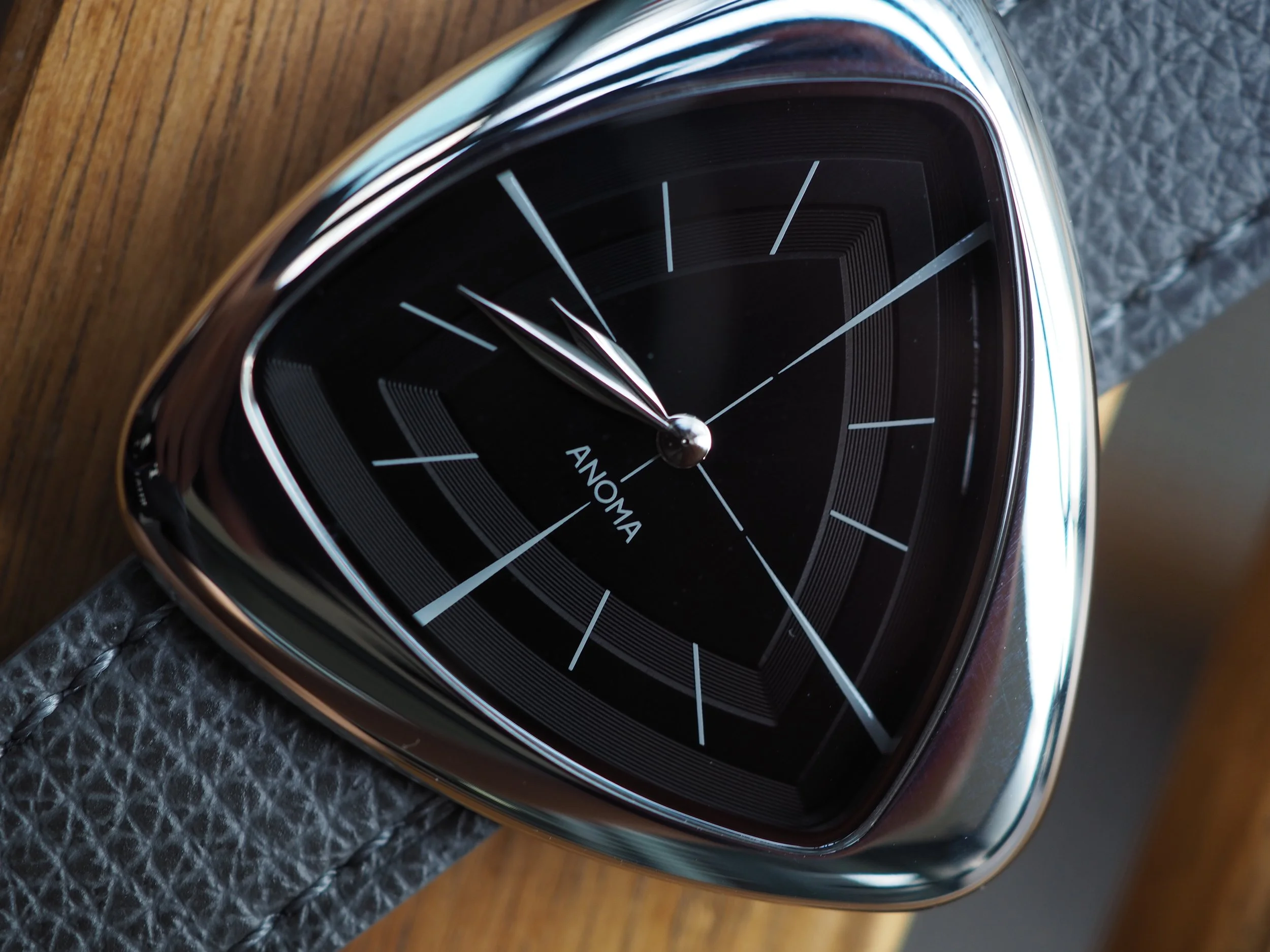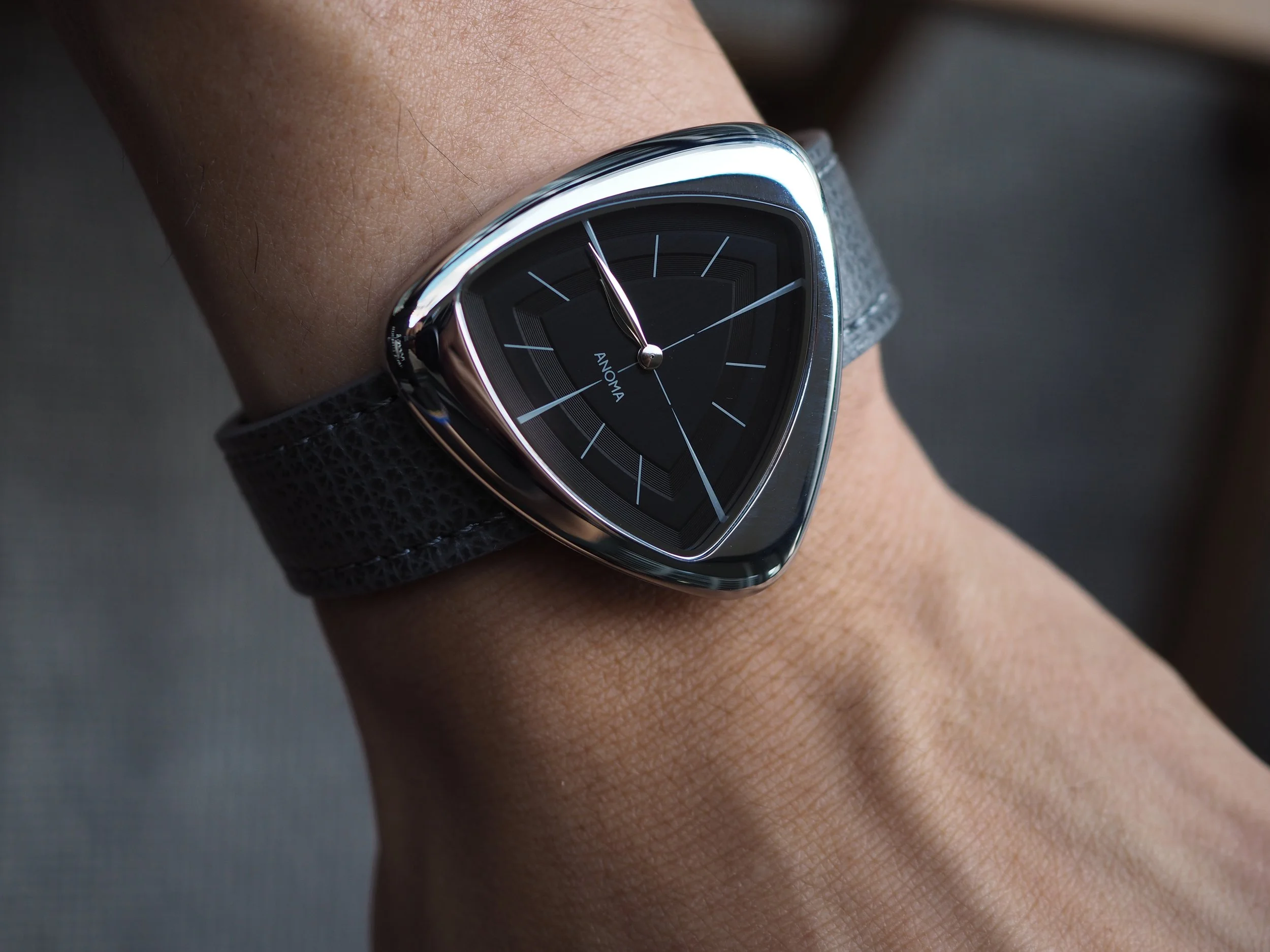Hands On: Anoma A1 ‘Slate’
In an industry often beholden to a rigid set of traditions and expectations, the A1 materialises as a profound challenge to the status quo. It is an object that eschews the typical horological lexicon of gears, complications, and high-octane performance in favour of a more elemental, sculptural language. This is a watch for those who view the wrist as a canvas for wearable art, a design-centric philosophy that resonates with a growing number of collectors seeking something that feels fresh, intentional, and deeply personal. To understand the A1 is to understand the vision of its creator, Matteo Violet-Vianello, and the creative ecosystem from which it was born.
Anoma's Founding Philosophy
The name Anoma is a deliberate contraction of "anomaly," a term that perfectly encapsulates the brand’s mission. Founded by Matteo Violet-Vianello, a former employee of the prestigious vintage watch platform A Collected Man and an Academy Member of the Grand Prix d'Horlogerie de Genève (GPHG), Anoma is a brand built on a foundation of profound industry knowledge, yet defined by a desire to break away from its most entrenched conventions. Violet-Vianello’s journey is one of intimate exposure to some of the finest watches ever made, an experience that has honed his taste and allowed him to identify a whitespace in the market: a demand for watches that prioritize artistic vision over archival homage.
Violet-Vianello’s philosophy, as evidenced by his interviews and the watches themselves, is that design is everything. He actively seeks inspiration from outside the insular world of watchmaking, drawing from art, architecture, and nature. This is a critical departure from many microbrands that often lean on nostalgic reinterpretations of classic designs. For Anoma, the blank page is not a limitation but a liberation. This approach allows for creative risks and the development of a unique, new design language, where every line, every curve, and every finish is intentional. The A1 is the physical manifestation of this ethos, a watch that feels less like a product and more like a small, wearable sculpture.
Deconstructing a Sculptural Case
The most striking aspect of the Anoma A1 is its triangular case. Yet, to simply call it "triangular" is to miss the point entirely. The form is not a sharp, geometric triangle but a soft, rounded, and organic composition. Its shape is a thoughtful homage to a 1950s free-form table by French designer and architect Charlotte Perriand. Perriand, a pioneer of modernist design and a key collaborator with Le Corbusier, was known for her ability to combine functional design with organic, sculptural forms. Her work often felt both radically new and profoundly timeless. This inspiration is not a direct copy but a conceptual touchstone, a way of grounding the watch's futuristic look in a rich and storied design history.
The case, made from a single block of 316L stainless steel, is intentionally polished to a mirror-like finish. This high polish is not for ostentation but for function; it transforms the watch's surface into a dynamic playground for light. As the wrist moves, the light travels across the case, bending and reflecting off the soft curves, giving the impression that the watch itself is in constant motion. The case also features a deliberate and subtle tension created by the overlapping of two triangles, a design choice that gives the watch a sense of dynamic energy.
Crucially, the A1 is a lug-less design. The strap attaches to the case via hidden spring bars, which allows the triangular form to remain completely uninterrupted. The crown, too, is recessed into the case, accessible through a small cut-away on the caseback. This detail is a demonstration to the brand’s commitment to purity of design. By concealing these functional elements, Violet-Vianello ensures that nothing detracts from the sculptural integrity of the watch. The result is a piece that feels less like a tool and more like an elemental object, a smooth river stone perfected by time and erosion, as Anoma's own creative director has noted.
The Slate Dial
Slate Vs. Blue
If the case is the brand’s bold statement, the dial of the A1 'Slate' is its whispered secret. The dial of the Slate model differs from the inaugural A1's vibrant blue, offering a more distilled and sober expression of the design. The dial itself is a series of four concentric triangular rings, diligently engraved using a hand-guided precision tool. These rings alternate between a fine, vertically brushed finish and a grooved, almost vinyl-like texture. This interplay of finishes is not random. Instead, it is a masterclass in subtlety. Depending on the ambient light and the angle of view, the dial can appear as a deep, nuanced charcoal grey, a soft black, or a striking two-tone composition of light and shadow.
The dial is finished with three layers of black lacquer, which gives it a remarkable depth and richness. The absence of a triangular logo at 12 o'clock, a change from the first model, further reinforces the brand's reductive design philosophy. The dial's layout is minimalist, featuring elongated triangular indices at the quarters that echo the case’s overall shape, providing a visual consistency that feels both considered and cohesive. The hands are a pair of elegantly curved leaf hands, polished to a mirror shine, with an exaggerated dome and curve to maximise volume and reflect light, further tying them to the watch’s overall aesthetic.
The Movement Within, Specifications, and Wearability
While the A1 is a watch of design, it is not without a capable engine. Powering the watch is the Sellita SW100, a diminutive but highly reliable automatic movement. The choice of this movement is a practical and intentional one. With a compact diameter of just 17.20mm (or 7.75 lignes) and a thickness of 4.80mm, the SW100 is specifically suited for shaped watches and smaller cases where a larger, more common movement like the SW200 or ETA 2824 would be too large. This allows the Anoma A1 to maintain its svelte dimensions and lug-less design, wearing comfortably on a variety of wrist sizes.
The SW100 operates at a modern frequency of 28,800 vibrations per hour (4Hz), ensuring smooth and accurate timekeeping. It provides a power reserve of approximately 38 to 42 hours, which is standard for a movement of this size and class. The Sellita SW100 is a no-frills but dependable caliber, perfectly aligned with Anoma's design-first approach. It does its job without demanding attention, allowing the design of the watch to remain the undisputed star. A notable, though minor, technical detail from the previous iteration is the absence of the "ghost" date position.
The recessed nature of the crown makes finding the time-setting position a slightly more deliberate act. The movement's solid caseback, on the other hand, further proves the focus on design, as there is no need to display a workhorse caliber that, while reliable, is not the hero of the story.
Despite its almost-40mm dimensions, the A1 wears significantly smaller on the wrist. The rounded triangular shape and the absence of traditional lugs mean that it feels more like a 37mm watch. Furthermore, the bottom 3mm of the case curves inward, allowing it to sit low and comfortably on the wrist, making it feel even thinner than its 9.45mm height would suggest. This attention to ergonomic detail is what transforms an unusual shape from a novelty into a genuinely comfortable everyday wear.
Final Thoughts
Anoma is not just another micro watch brand trying to make a splash in a crowded marketplace. It’s born from a deliberate rejection of the easy route. Where many young brands might anchor their first release to familiar shapes, recycled heritage cues, or obvious nods to icons, Anoma has instead forged its own visual and philosophical language. The result is a design that feels both startlingly fresh and curiously eternal, to me.
The A1 may not be a watch for everyone, and it doesn't try to be. It exists outside the conventions of tool watches, dress watches, or sports watches. It is a watch for those who appreciate the nuanced beauty of a design that doesn't need to shout to be heard. Its inspiration is not found in the pages of horological history but in the enduring legacy of modernist art and architecture. It is an object that makes a statement by its very refusal to conform.
On the wrist, the A1 is an object of conversation, but not in the loud, look-at-me way of a statement watch. Instead, it invites curiosity: questions about angles, finishes, and how such a geometric concept can still wear with ease. It’s not the kind of piece that instantly declares itself; it’s the kind that rewards a second, third, and fourth look.
If the debut watch tells you anything about a brand’s trajectory, then Anoma’s first step is a strong one. The A1 is not a piece you buy because it reminds you of something else, it’s one you buy because it couldn’t possibly be anything else.







